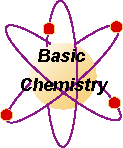Rate of Reaction
Purpose:
You will be determining the effect of temperature and concentration on the rate of reaction. You must determine higher and lower molarities for 50 ml of solution.
Materials:
- watch
- graph paper
- testubes
- testube rack
- thermometer
- small graduated cylinder
- eyedropper
- watch
- graph paper
- testubes
- testube rack
- thermometer
- small graduated cylinder
- eyedropper
Chemicals:
- 1 drop of 0.02 M potassium permanganate to be added to 5 ml of 5.0 M oxalic acid OR 5 ml of 0.1 M potassium persulfate with 10 drops of starch solution added to 5 ml of 0.2 M potassium iodide.
Procedure:
-
Note the color os the chemicals before mixing.
- Combine the chemicals and start timing.
- When the pink color turns yellow for potassium permanganate OR green-yellow for potassium persulfate stop timing and record the elapsed time. For timing it may be easier to check by holding the testube with the chemicals in front of a newspaper until the words disappear.
- Take the temperature of the solution.
- If the reaction was too slow do the same experiment over using solutions at least 10oC higher.
- If the reaction was rapid, percool the solutions 10oC and do it again.
- Repeat a third time using another temperature.
- Next you will find out the affect of concentration upon the reaction.
- Be sure to run the reaction at the same temperature as one you have done before and change the concentration of only one reactant.
Data: Make up two data tables and two graphs to show the results of your experiments.
Conclusion: Relate this experiment to what is expected for temperature and concentration effects.


